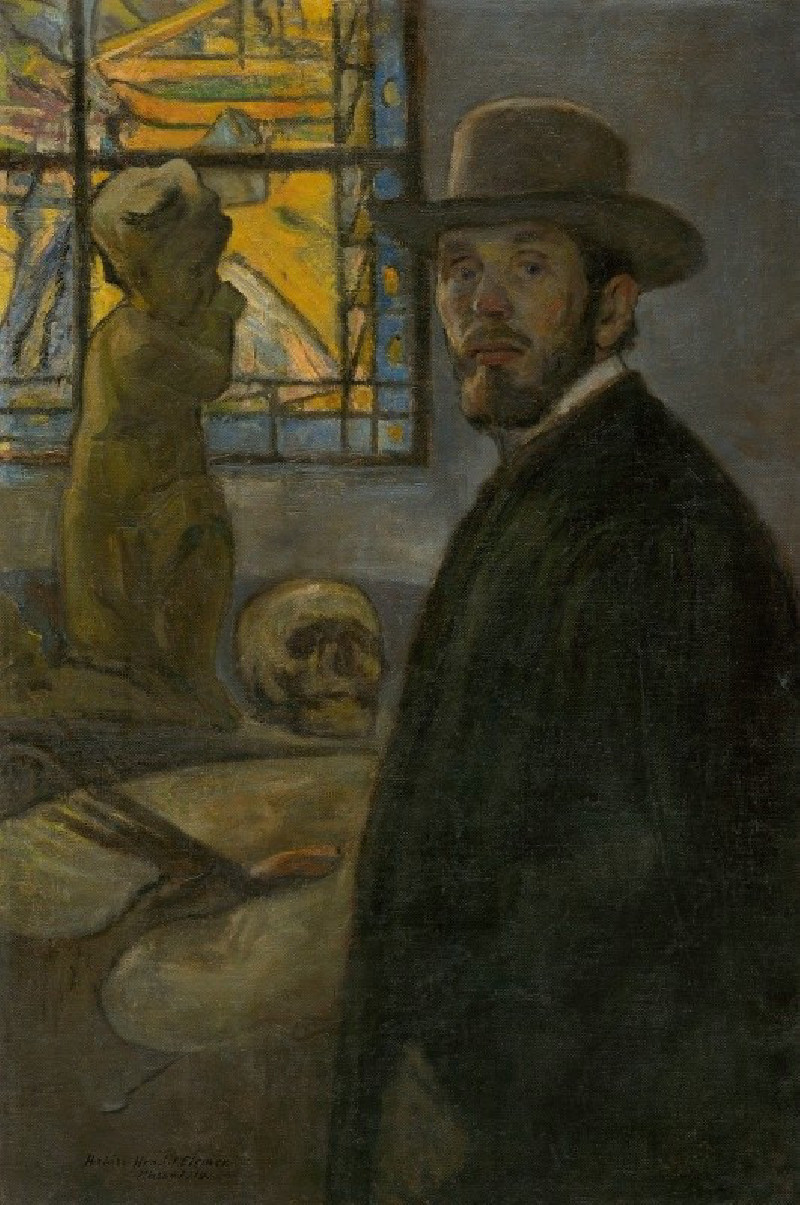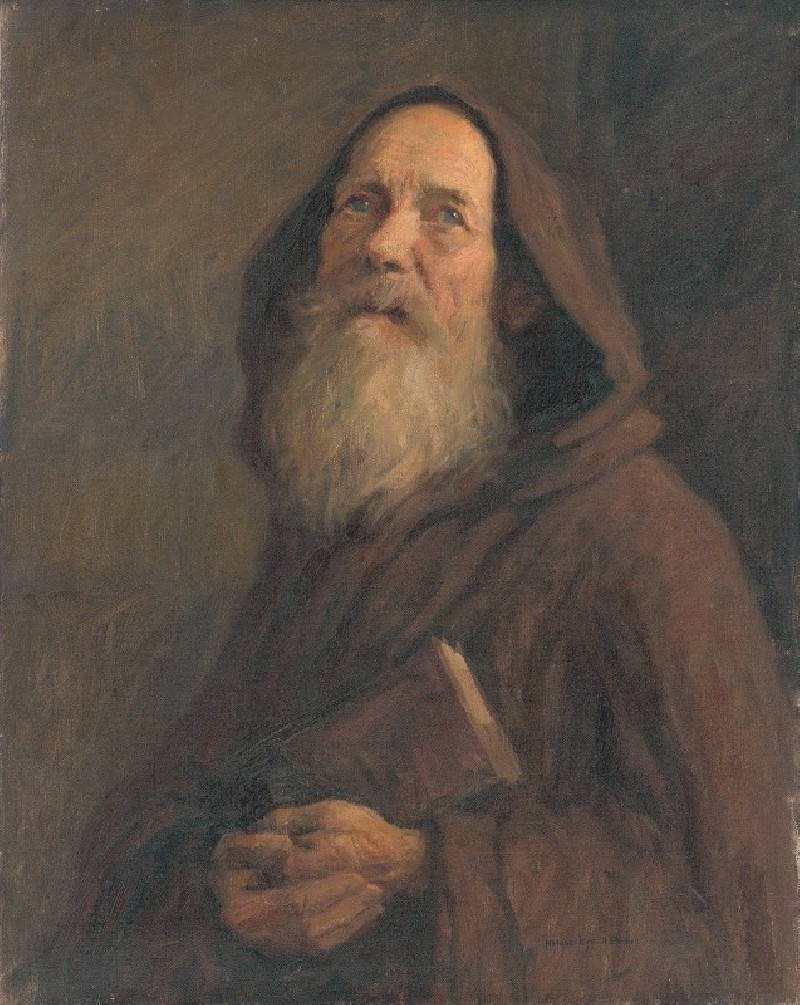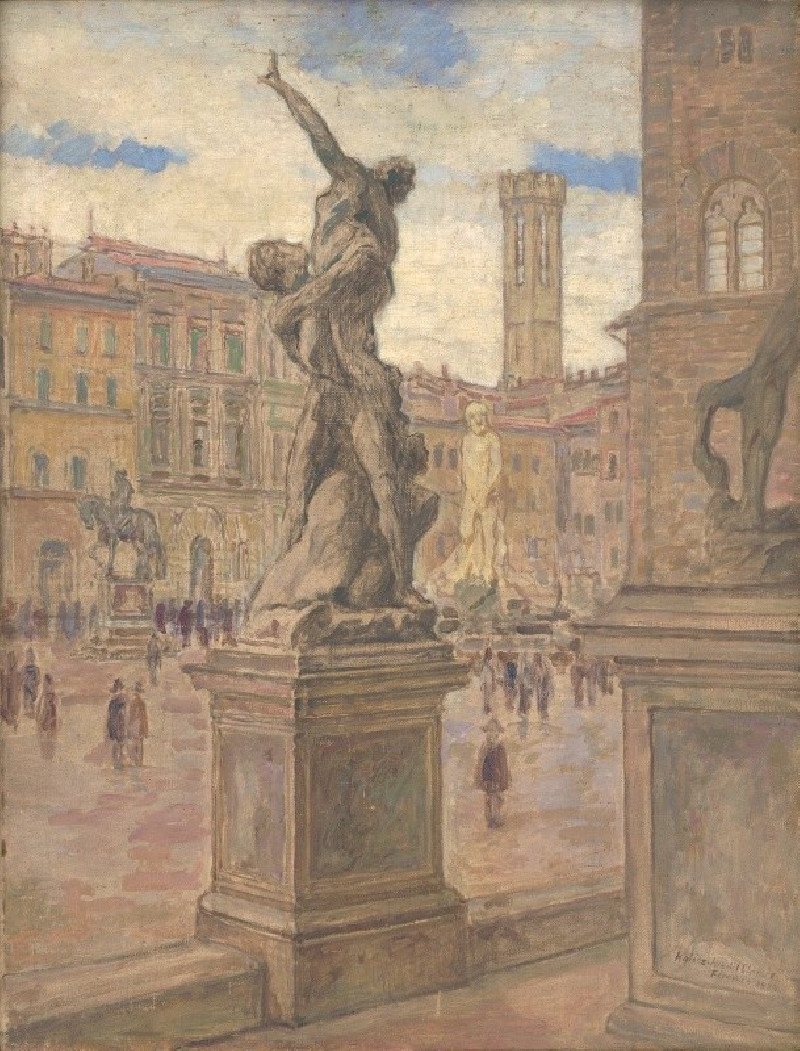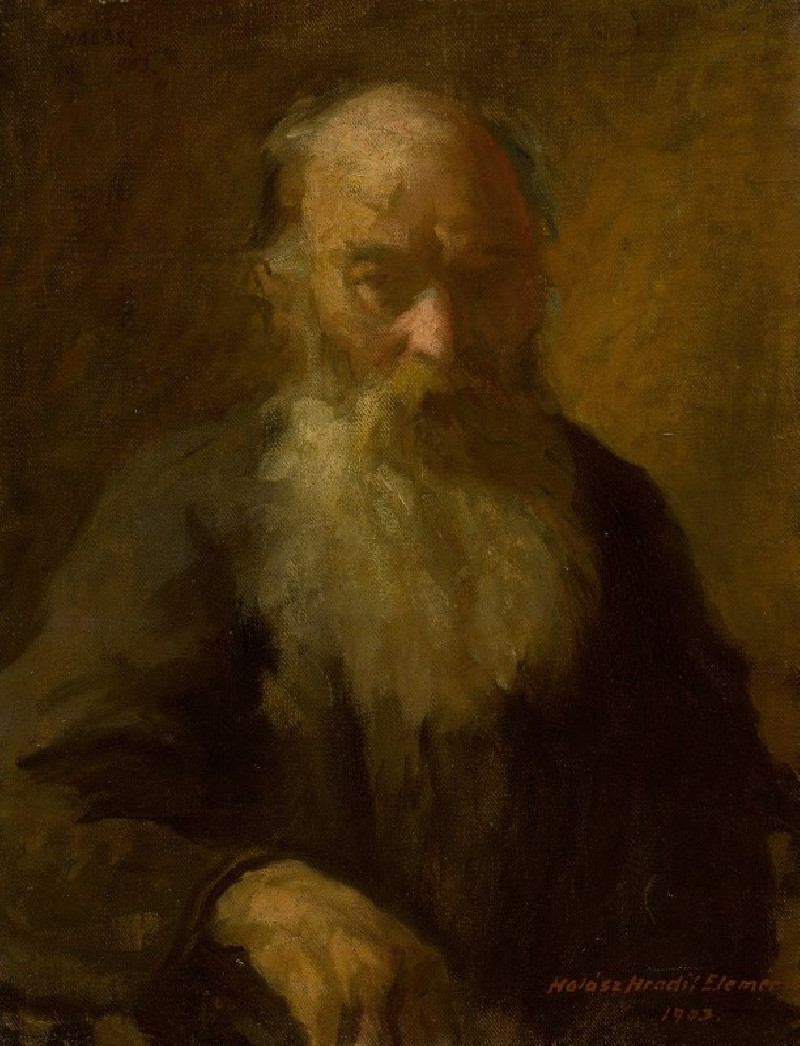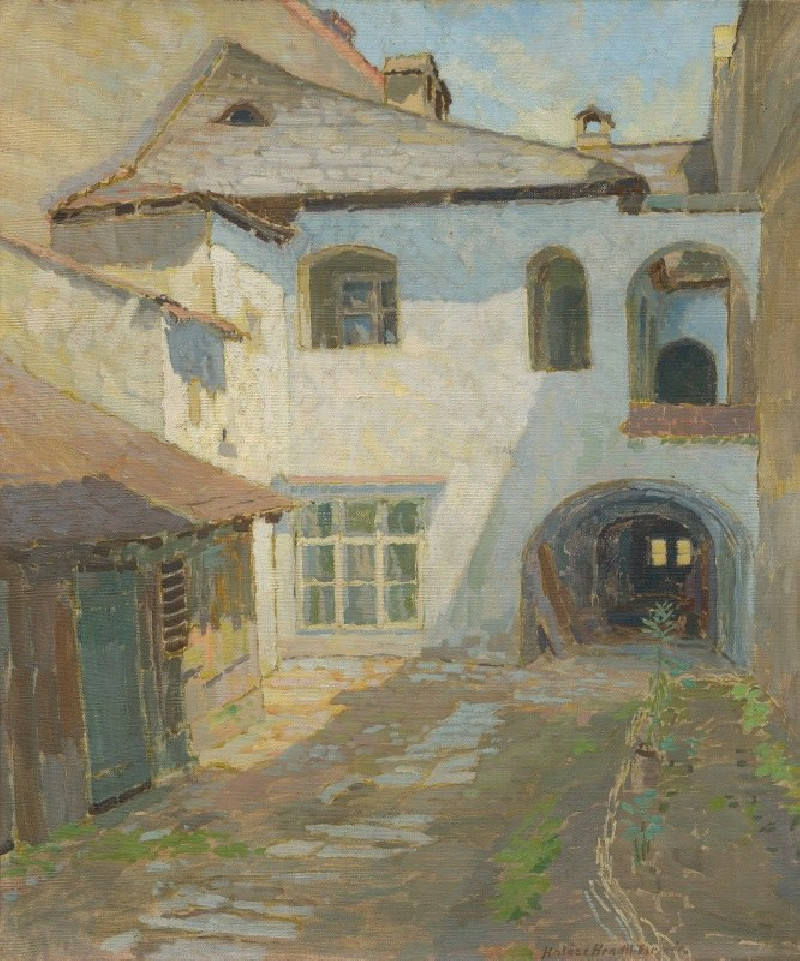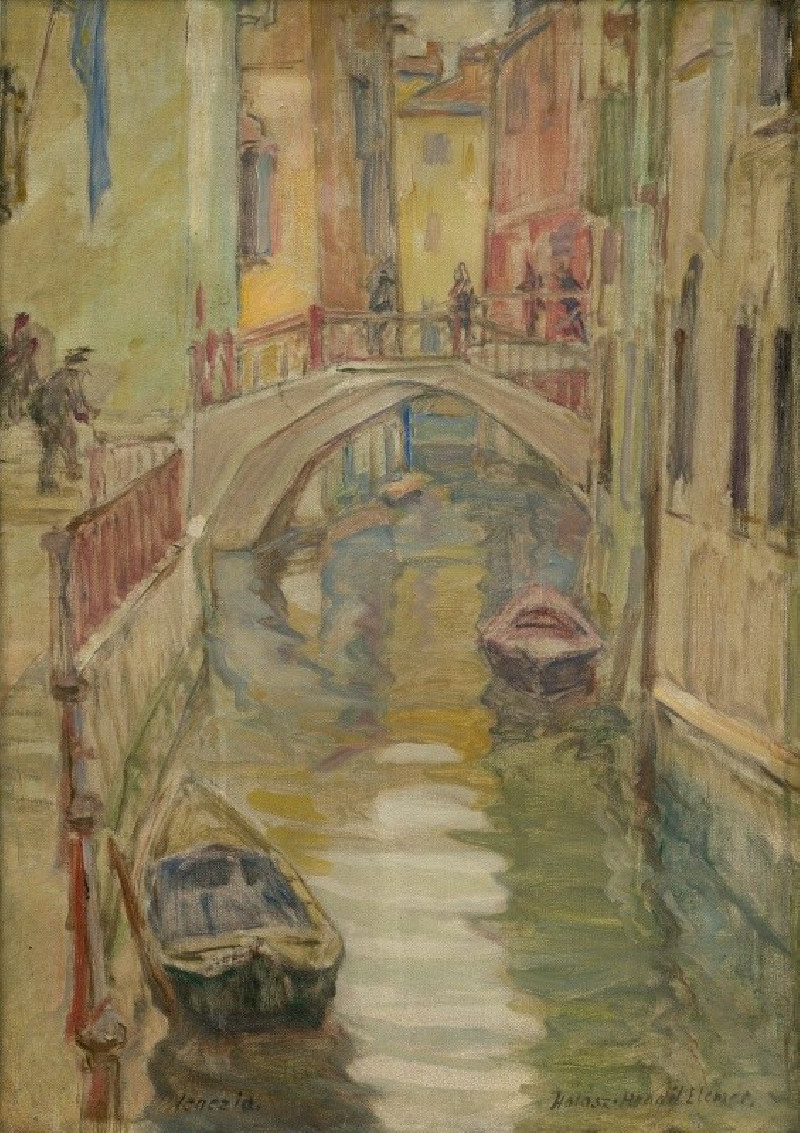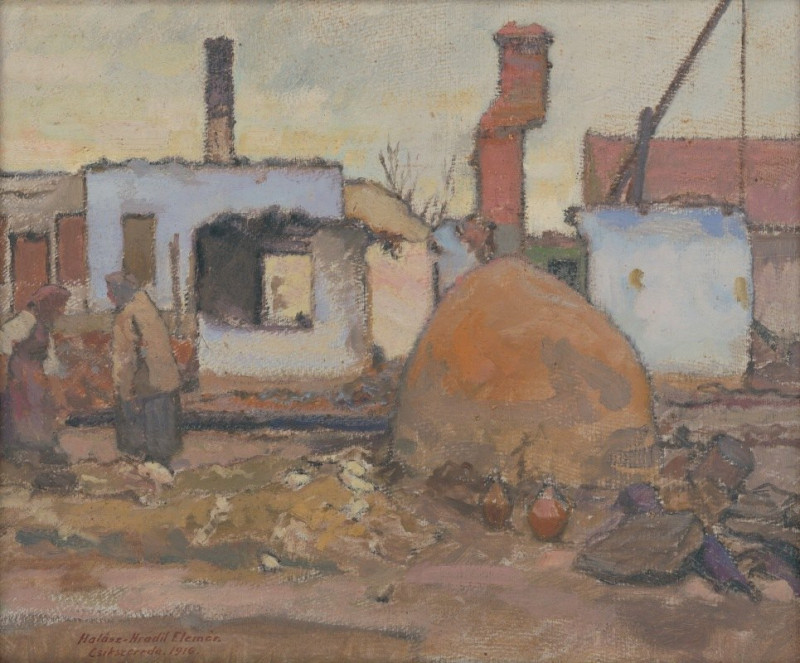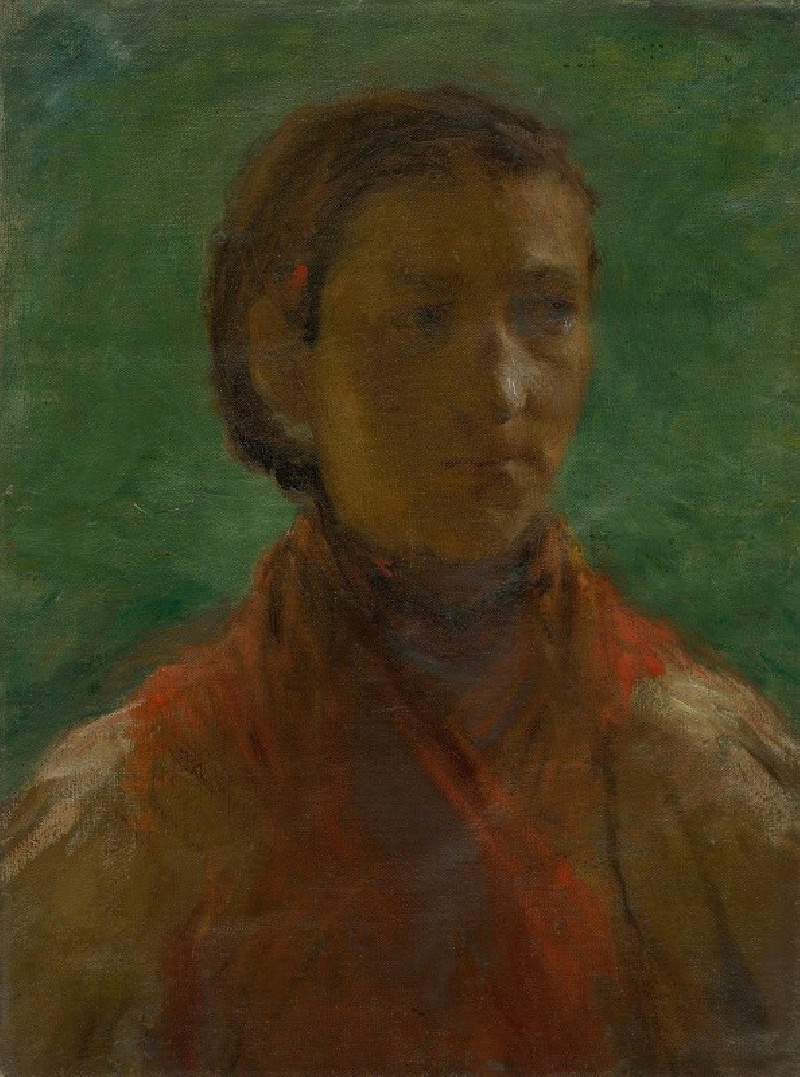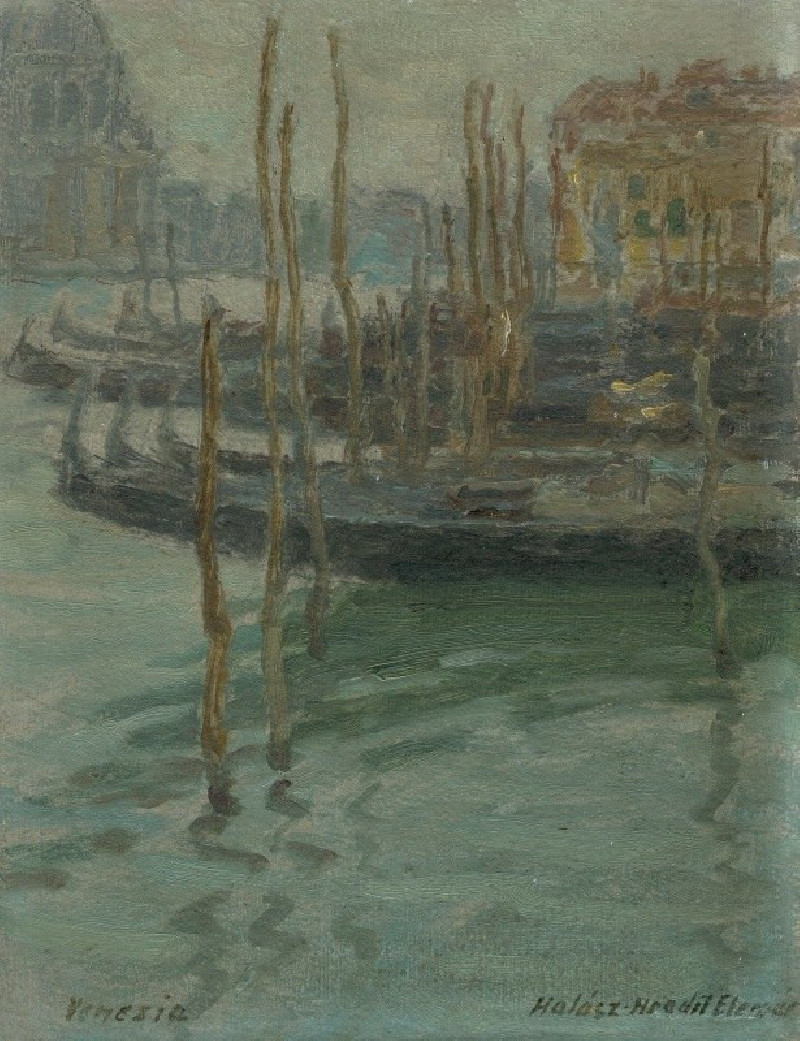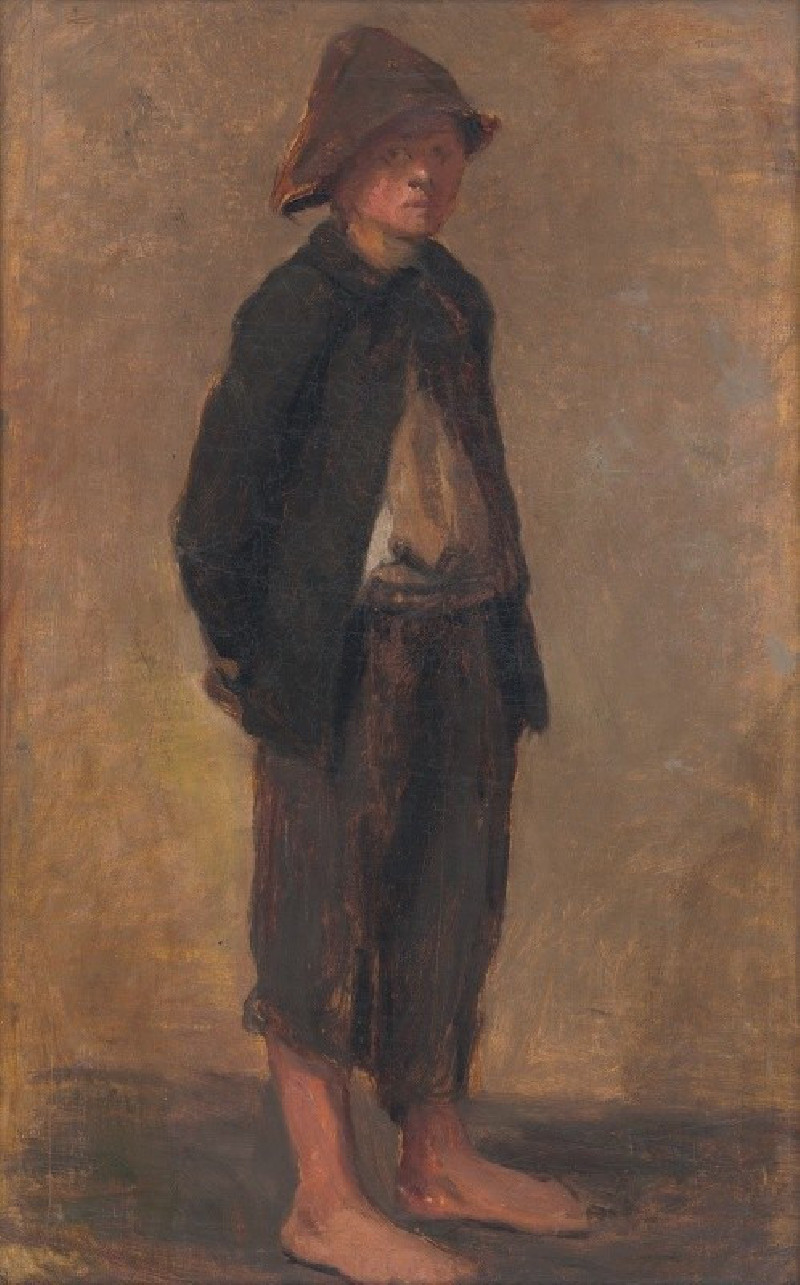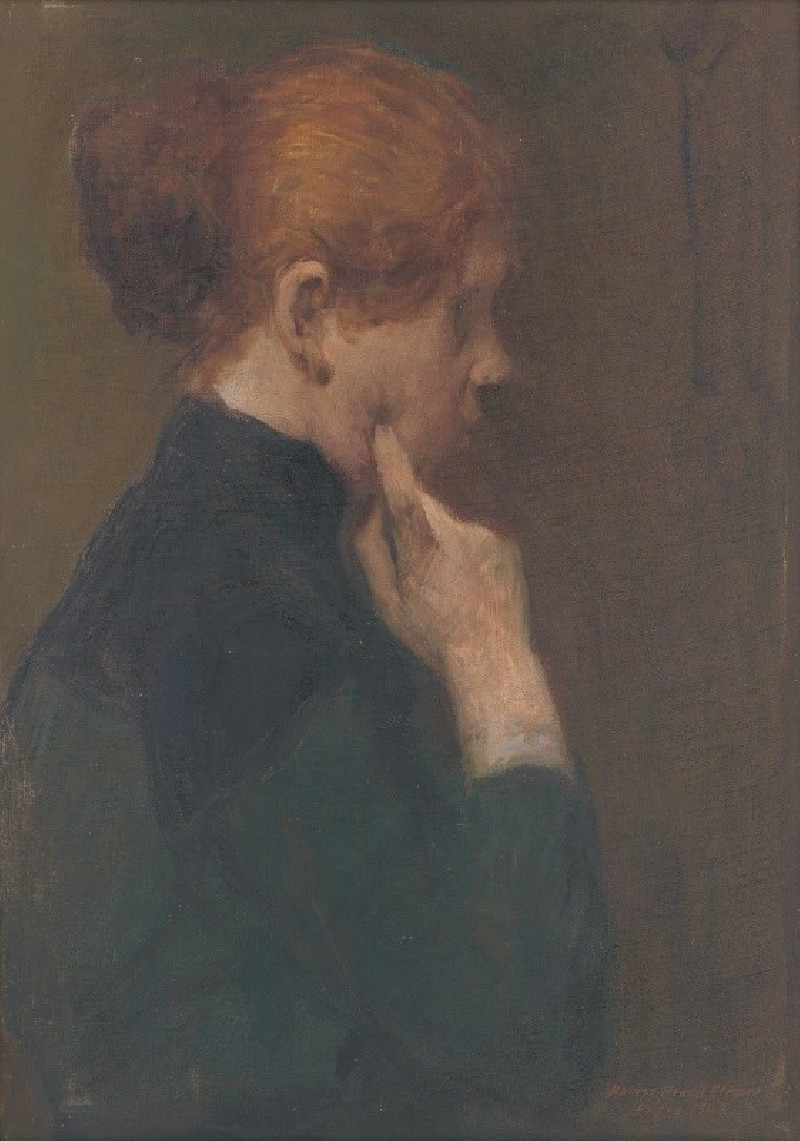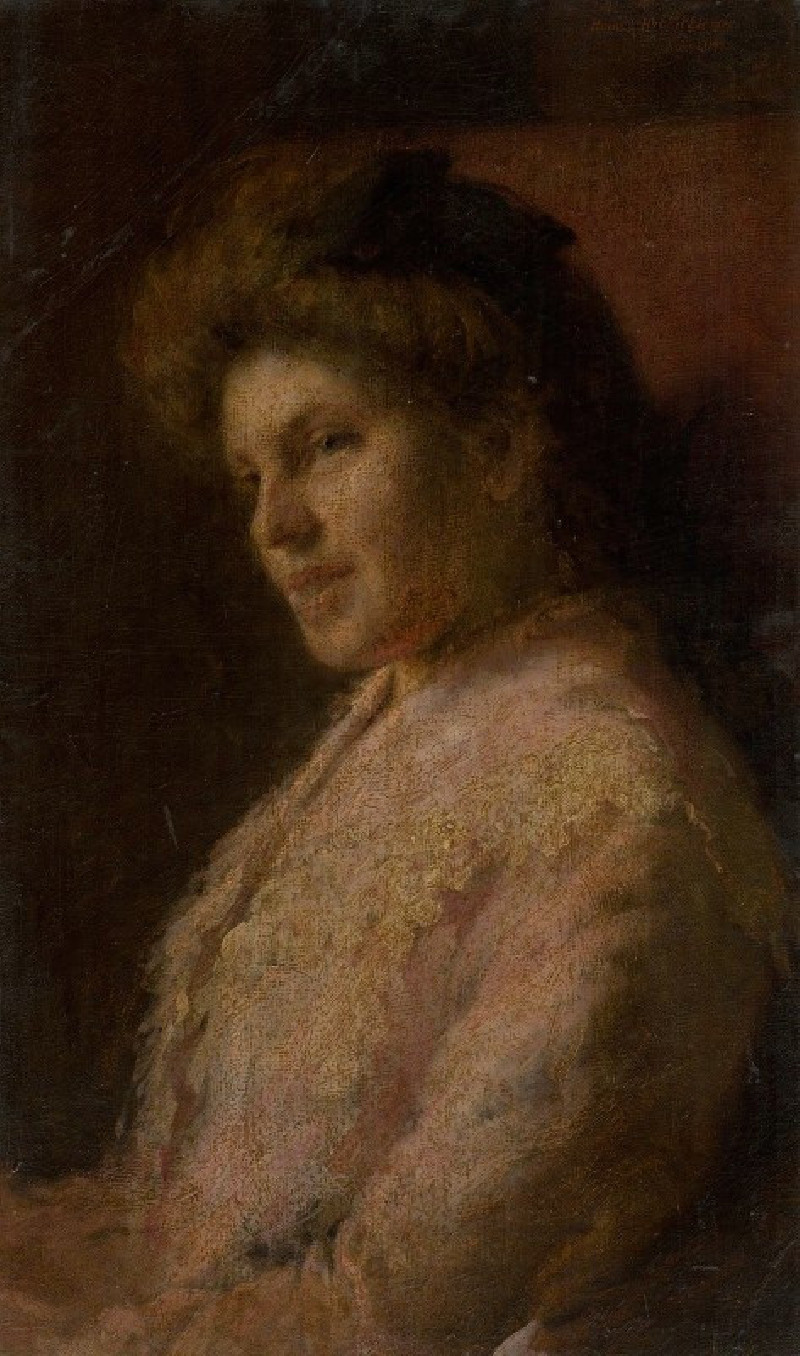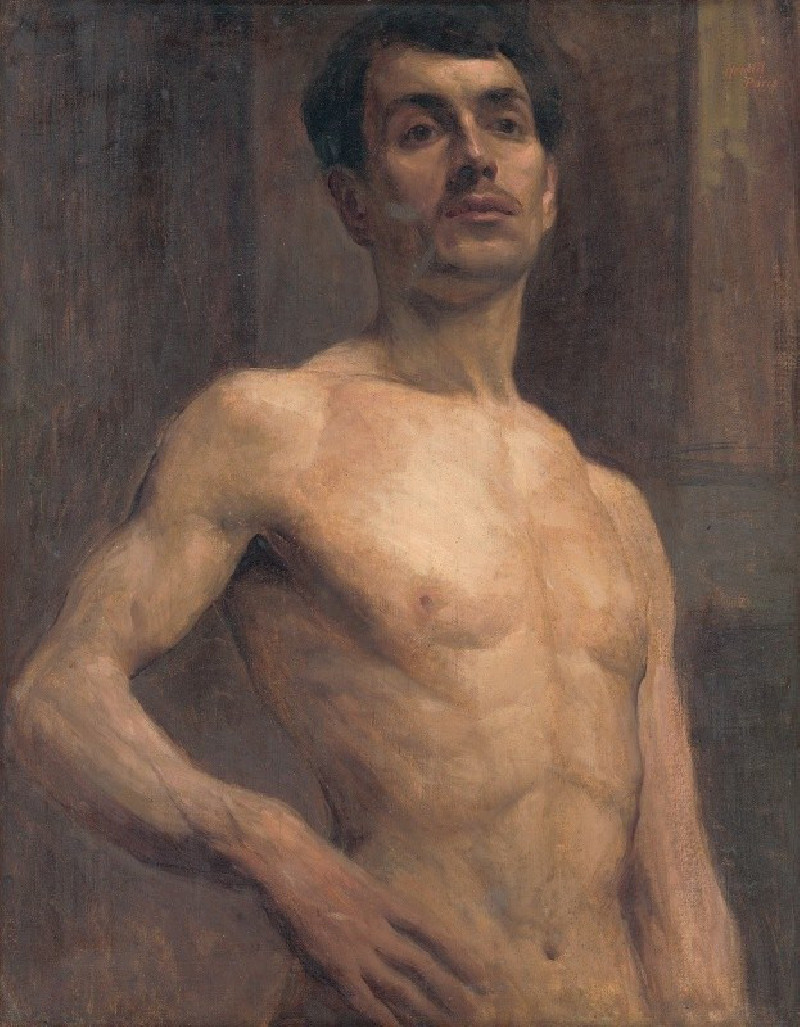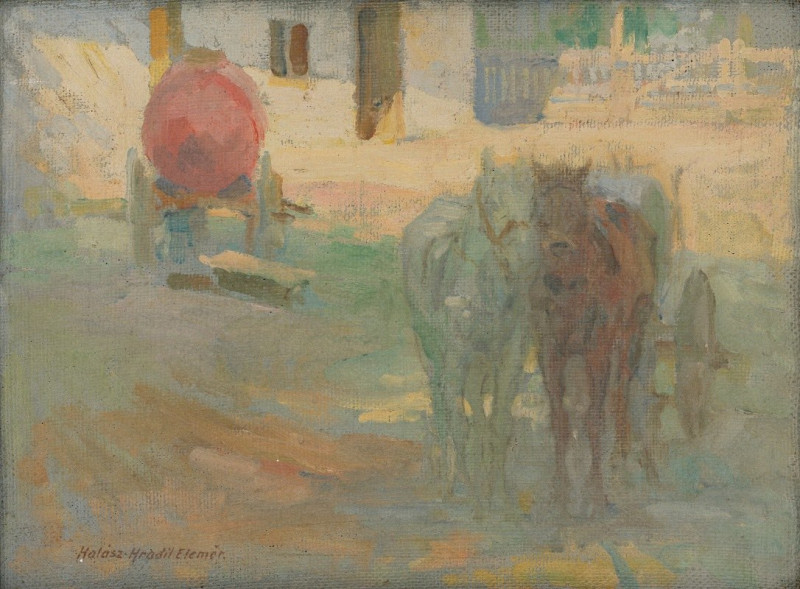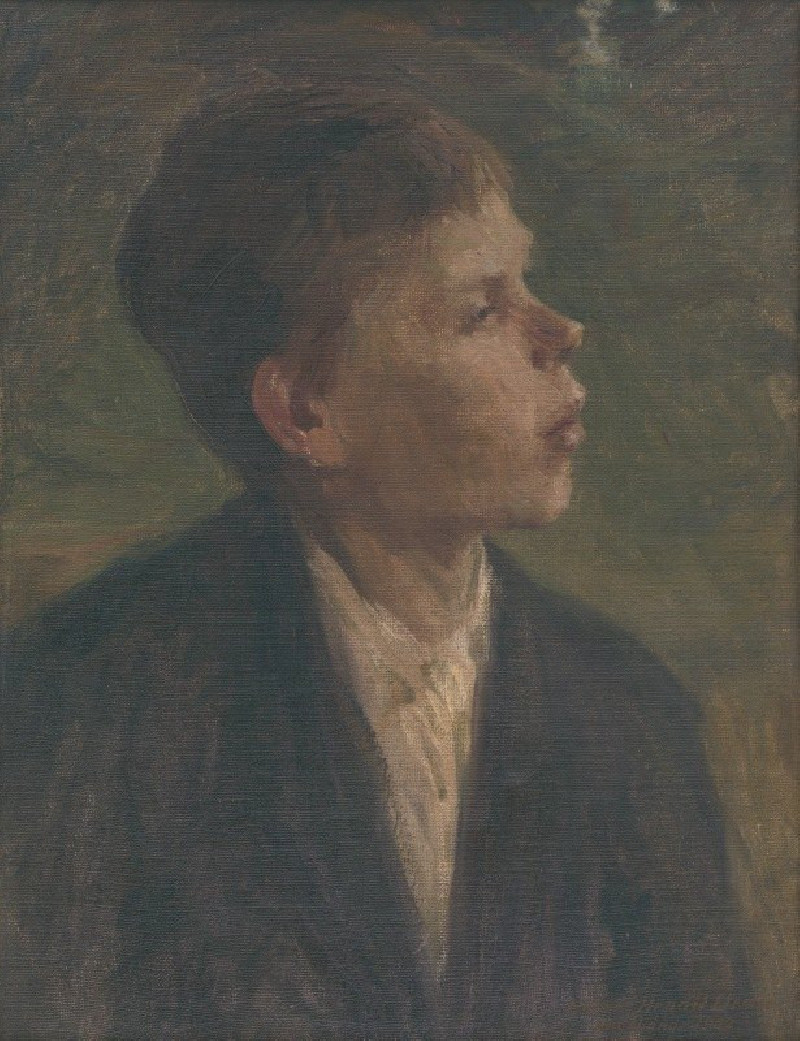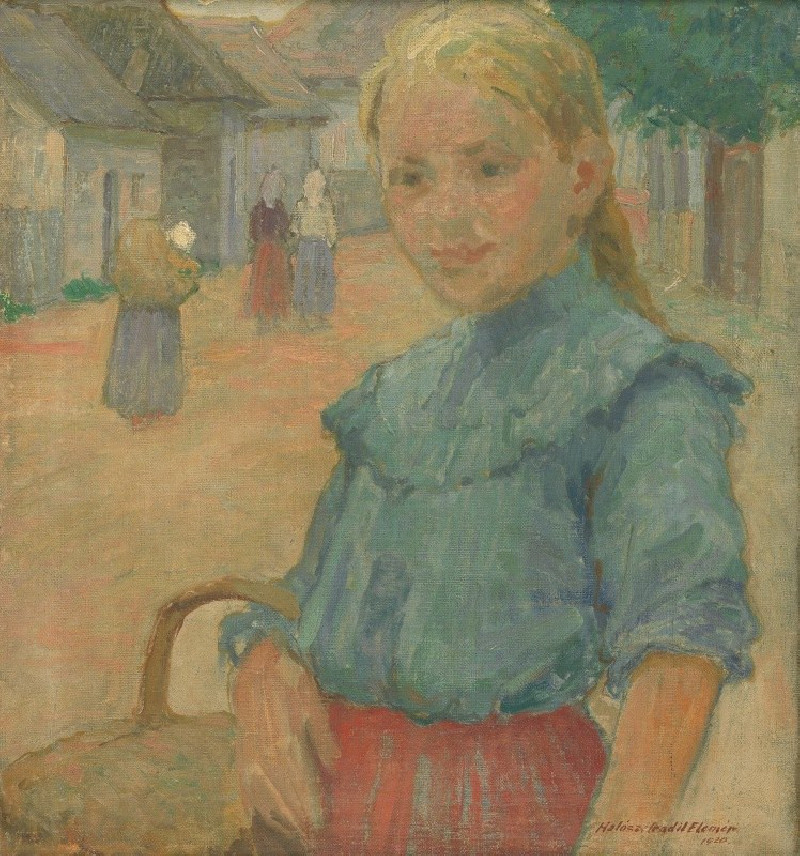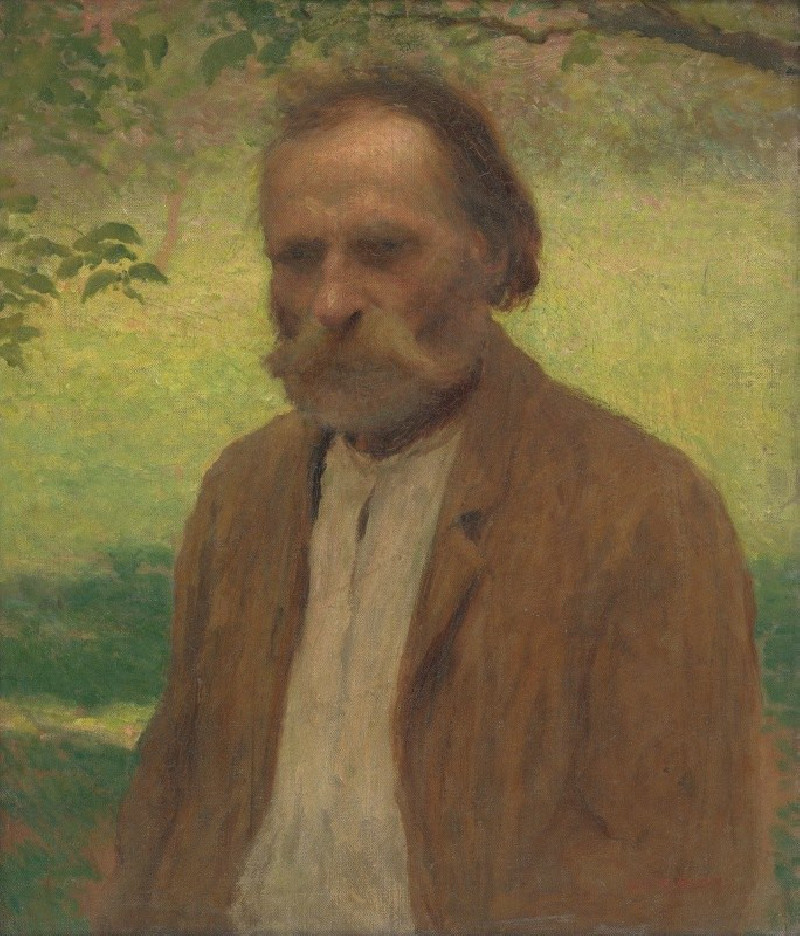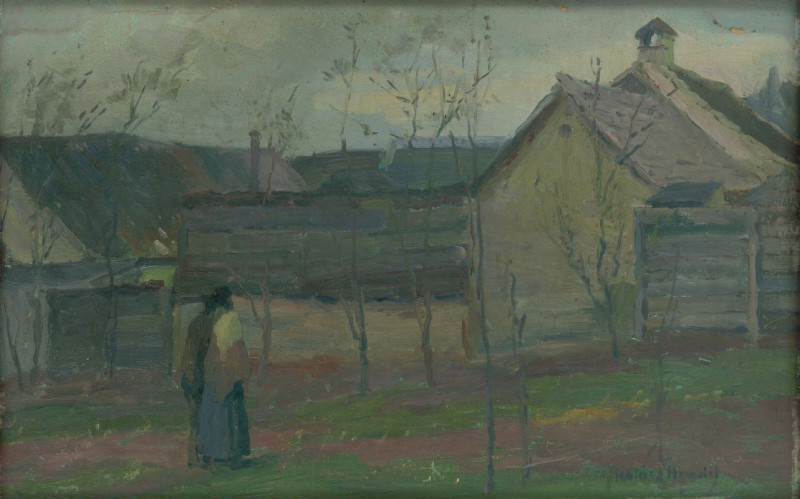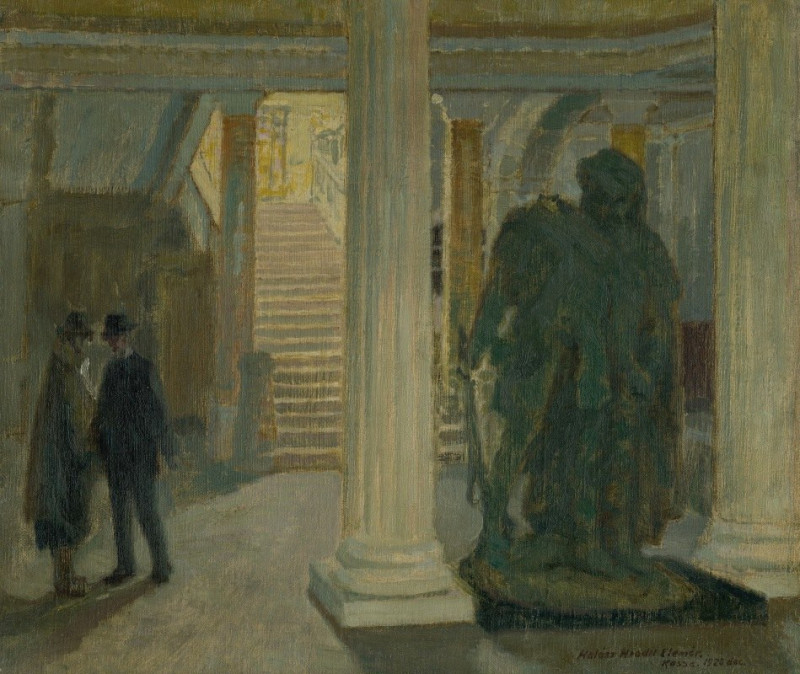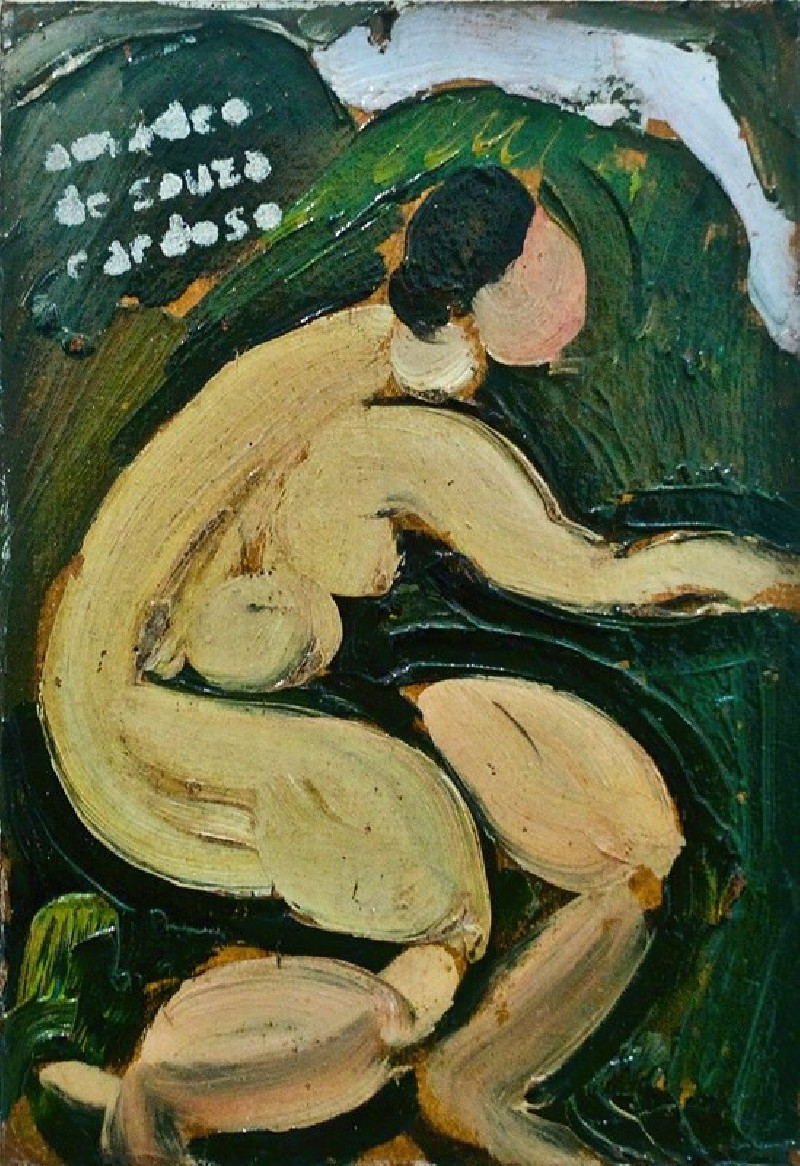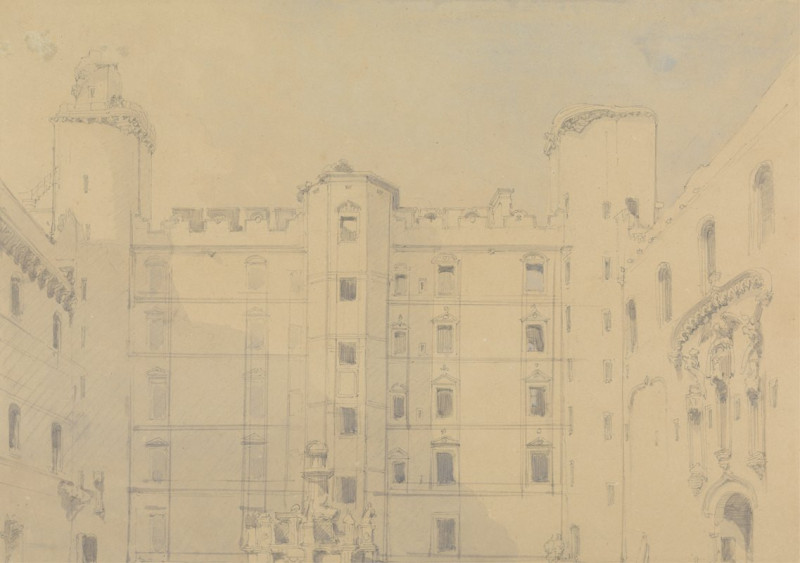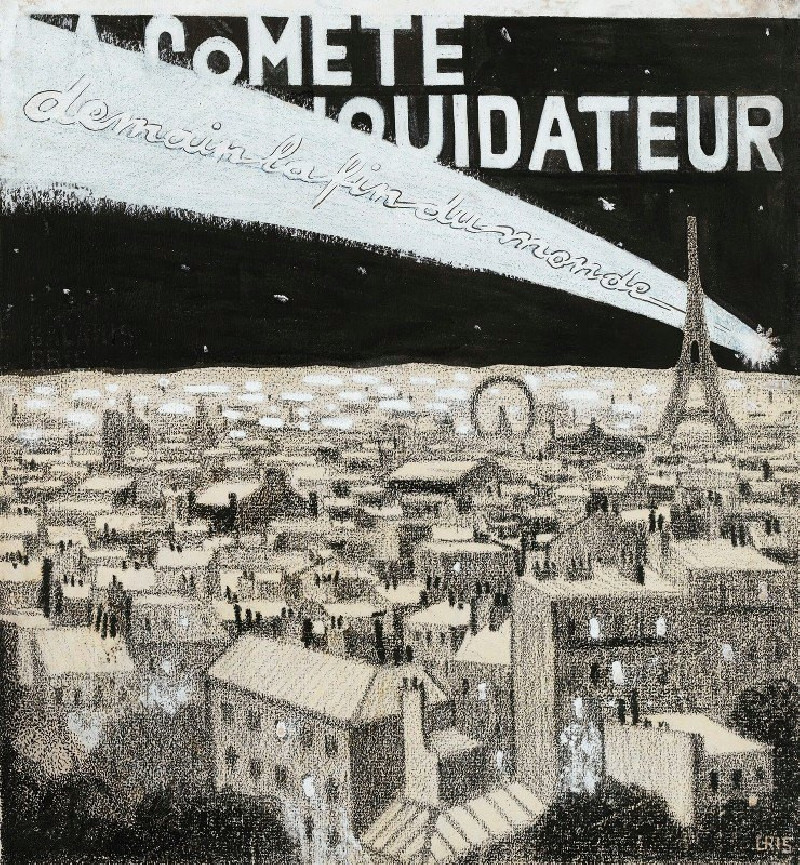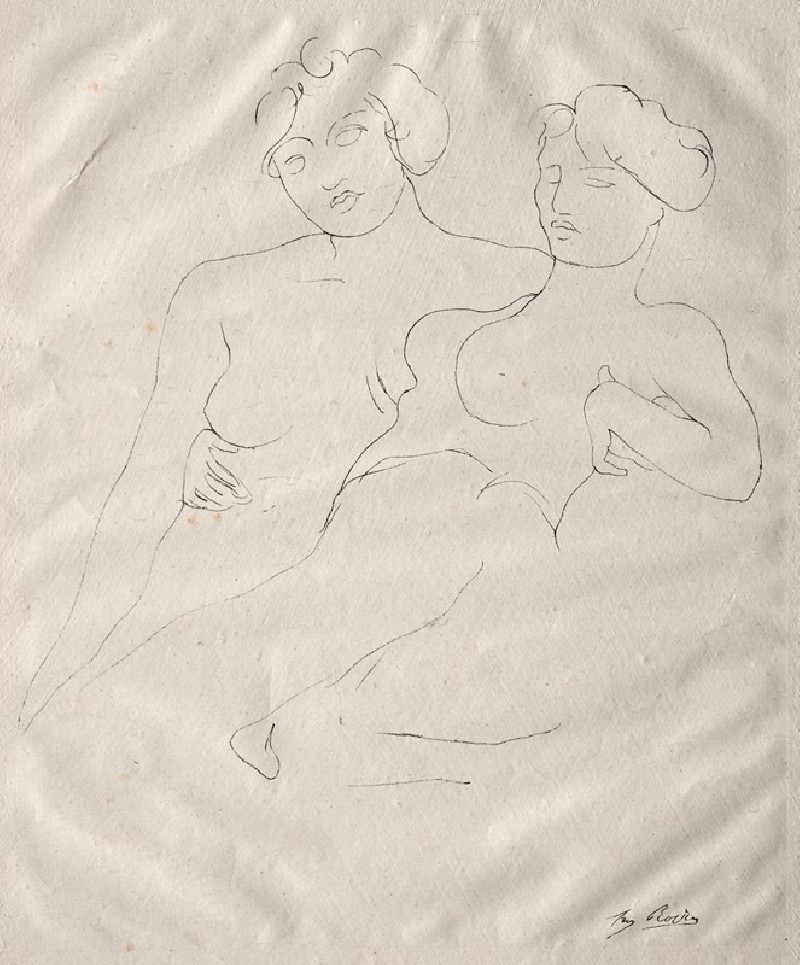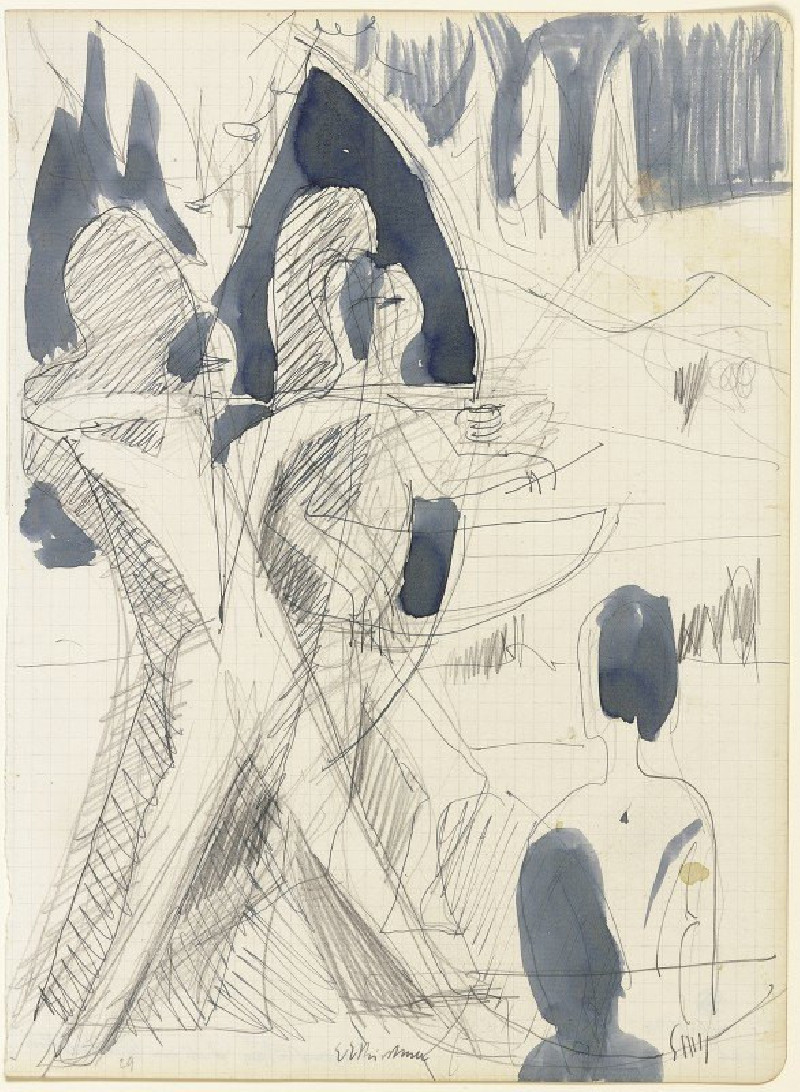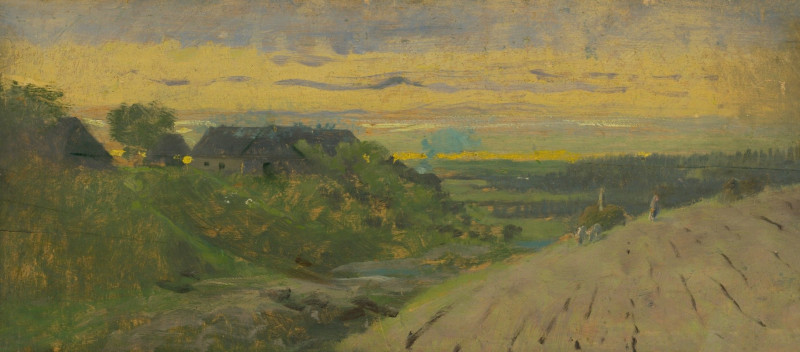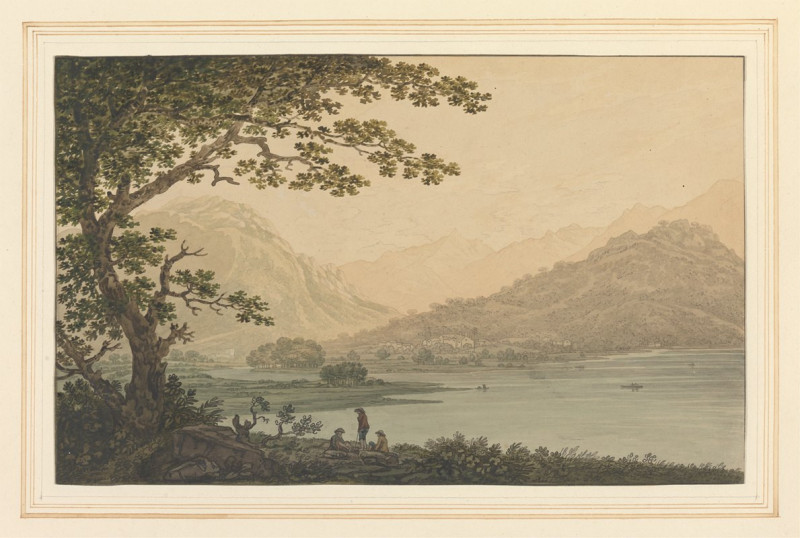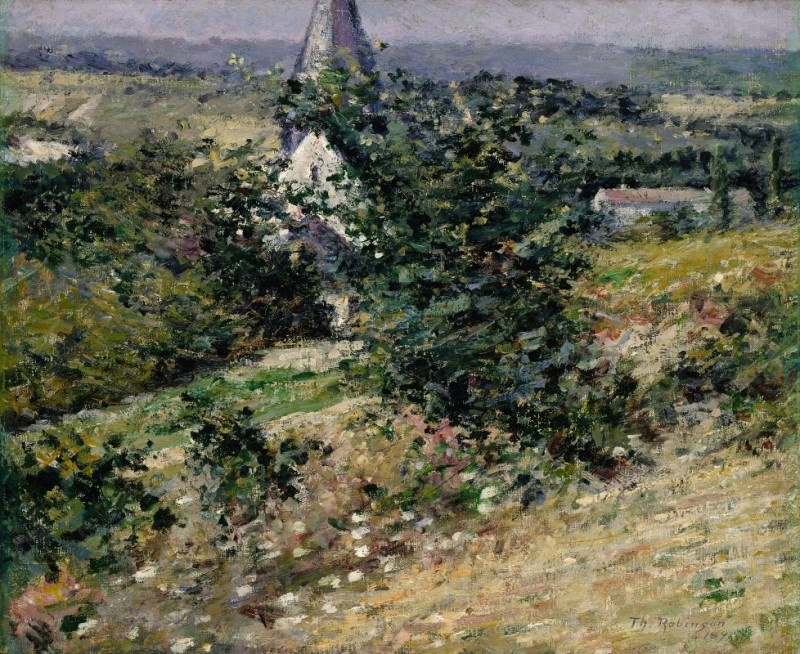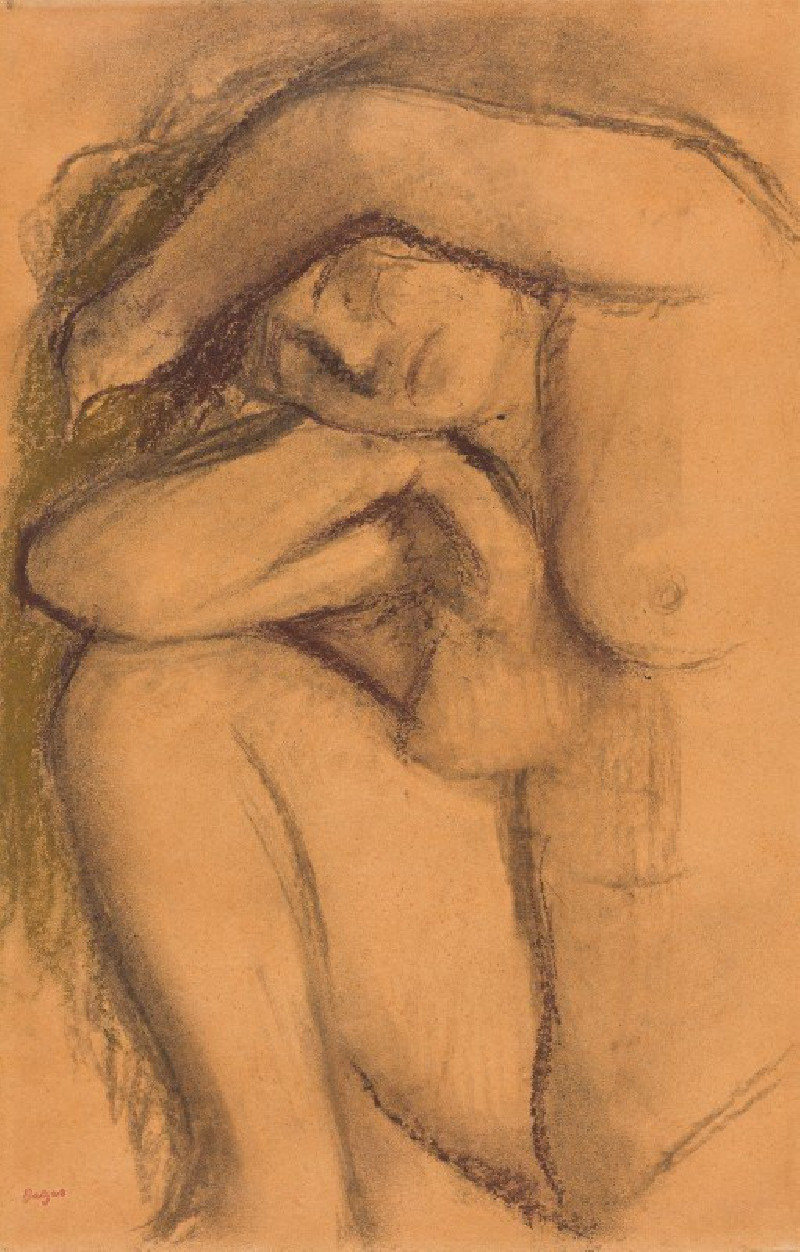Self portrait (1919)
Technique: Giclée quality print
Recommended by our customers
More about this artwork
Welcome to an intimate glimpse into the artistic inner world of Elemír Halász-Hradil through his compelling self-portrait from 1919. This painting captures not just the artist's physical appearance, but also the essence of his creative surroundings and personal reflections.In this self-portrait, Halász-Hradil presents himself in stark, thoughtful detail. He stands in the foreground, dressed in a dark coat and a hat that suggests the fashion of the time, his gaze meeting the viewer's with an expression that is both reserved and introspective. His face, marked by a carefully groomed beard and mustache, conveys a sense of seriousness and perhaps the weight of his experiences.Behind him, the composition grows more complex and symbolic. A large, colorful stained glass window bathes the scene in a mosaic of light, suggesting a space dedicated to reflection and art. Beside the window, a sculpted figure seems to be in a pose of contemplation or sorrow, introducing a layer of emotional depth and underscoring themes of human fragility and existential contemplation. This juxtaposition of the living artist and the static sculpture creates a compelling dialogue between creation, creator, and the created.On the table, partially obscured by the artist’s silhouette, lies a skull. This classic symbol of mortality is a stark reminder of life’s transient nature and a common motif in the history of self-portraits, inviting viewers to ponder the impermanence of life and the permanence of art.
Delivery
Returns
Elemír Halász-Hradil (1873 m. - 1948 m.) was a Slovak painter of Hungarian origin.
He lived in Vienna from 1892 to 1894.The following year he moved to Košice. He studied at Simon Hollósy's private school in Munich from 1897 to 1901, he then continued his studies at the Académie Julian in Paris with Professor Jean-Paul Laurens from 1902 to 1903.
With a soft palette and hazy paint handling, Halász-Hradil executed a variety of quiet portraits and scenes of everyday life. Along with selling his paintings, Halász-Hradil made a living as a painting teacher.

